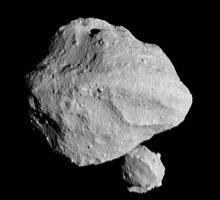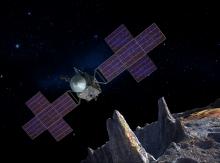Listen to today's episode of StarDate on the web the same day it airs in high-quality streaming audio without any extra ads or announcements. Choose a $8 one-month pass, or listen every day for a year for just $30.
You are here
Centaurs
Centaurs are everywhere. Two constellations are named for these mythological creatures, which are half man and half horse: Centaurus, the centaur, and Sagittarius the archer, which is a centaur holding a bow and arrow.
But many more centaurs are hidden from view. These are big chunks of debris in the outer solar system. Many of them exhibit traits of both rocky asteroids and icy comets. This mixed identity led to the “centaur” name.
The first centaur was discovered 40 years ago, and astronomers have found hundreds more since then. They circle the Sun between the orbits of Jupiter and Neptune, the inner and outer giant planets. And they cross the orbits of one or more of the planets.
Centaurs may have come from the Kuiper Belt, a doughnut-shaped zone beyond Neptune. Interactions with other members of the Kuiper Belt may have pushed them toward the Sun. Now, they journey through the realm of the giants — but not for long. Within a few million years, the gravitational influence of the giant planets kicks a centaur either into the inner solar system, where it might hit the Sun or a planet, or out of the solar system entirely.
The largest known centaur is Chariklo. It was discovered 20 years ago today. It’s roughly 150 miles in diameter. A few years back, astronomers found that it has at least two rings. That makes Chariklo the smallest body in the solar system with known rings — perhaps adding a third identity to this solar-system hybrid.
Script by Damond Benningfield





